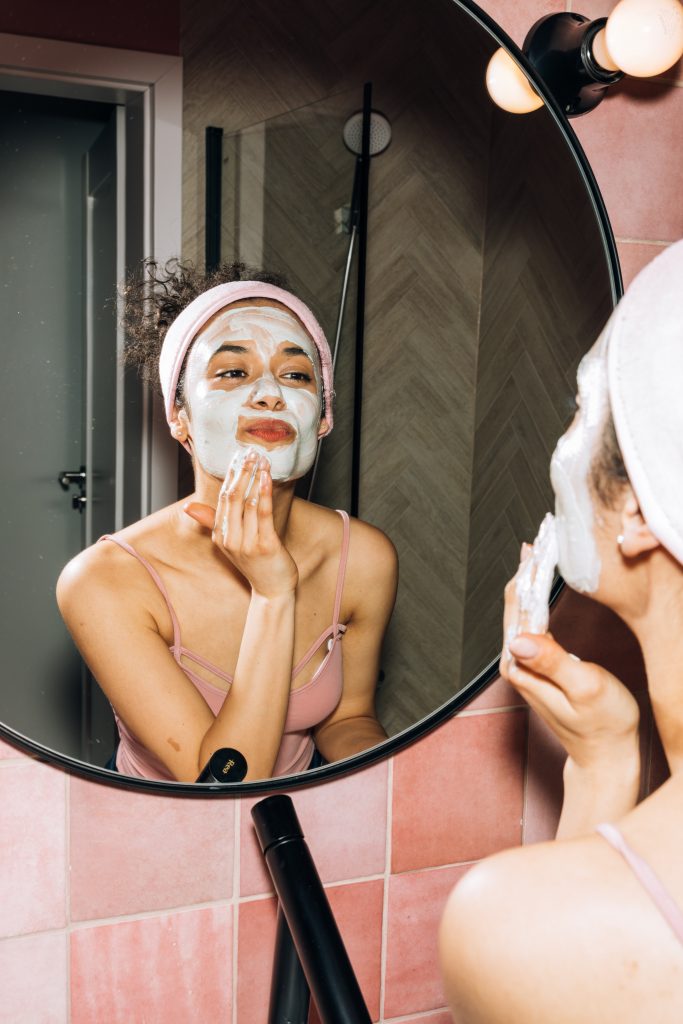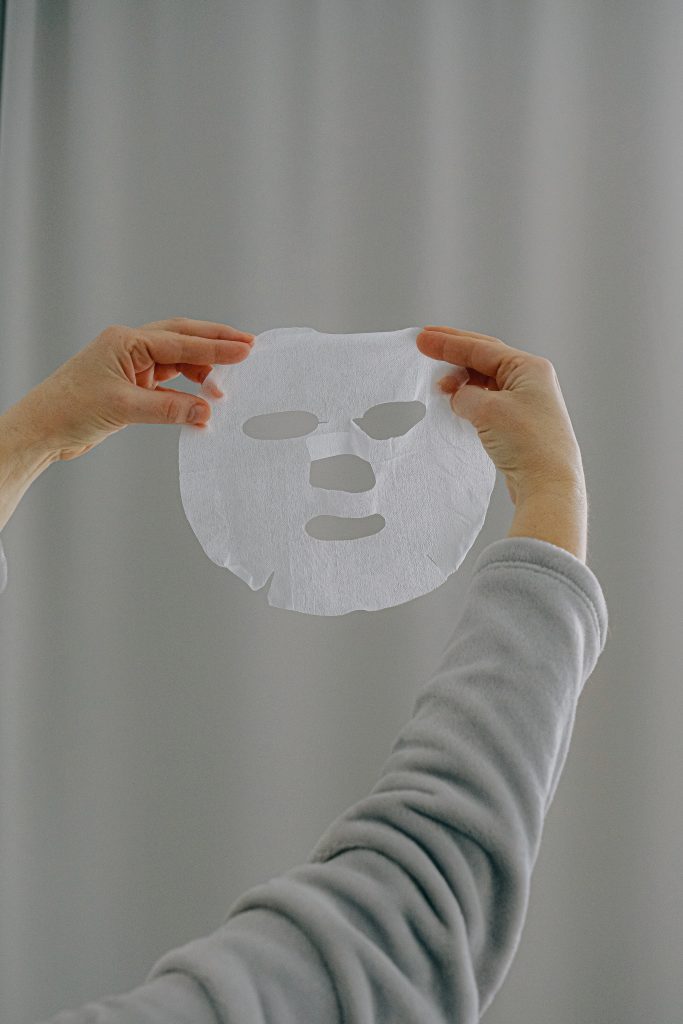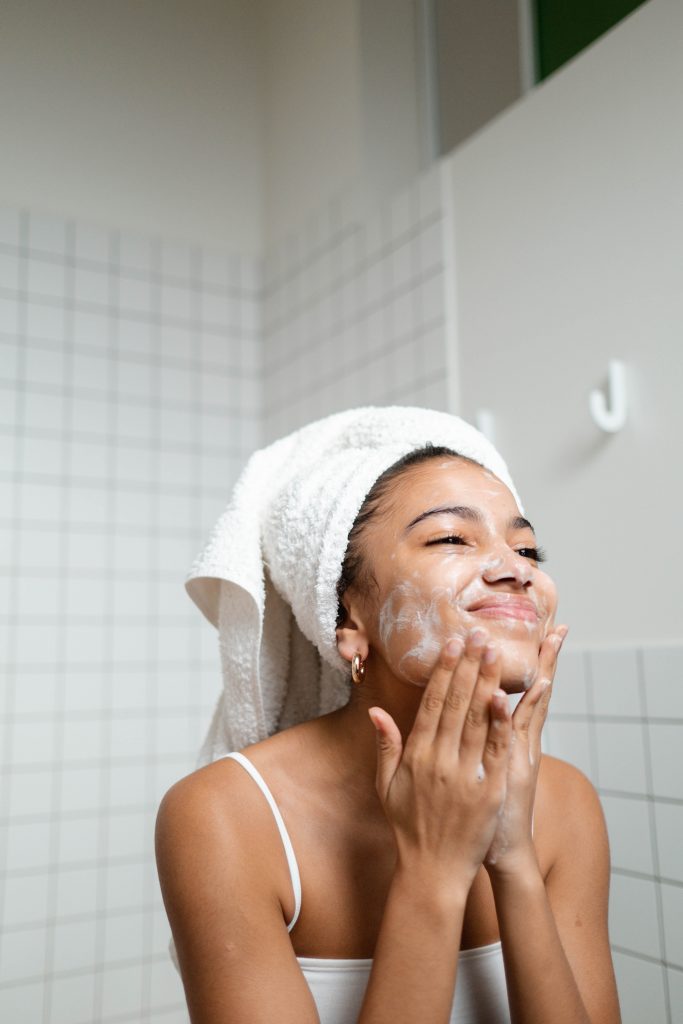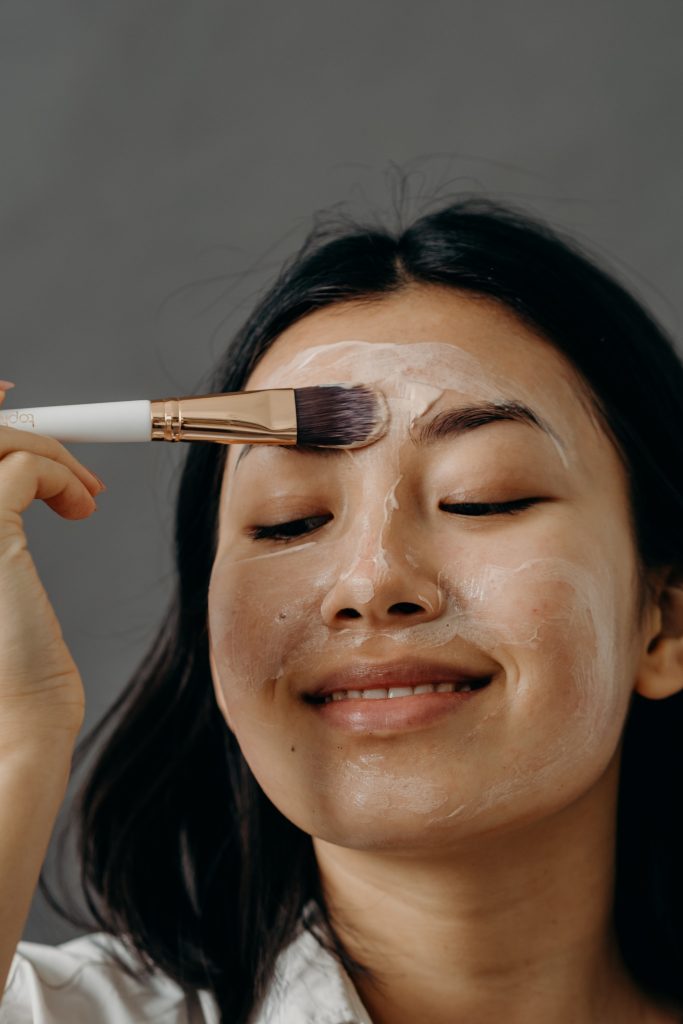Ever since face masks took over the internet, more and more people have come forward saying that they can be harmful to your skin. Now, of course, if you’re using the wrong ingredients, face masks could do your skin more harm than good. And this is where I come in to guide you on what ingredients you should use for your skin type. Keep on reading to discover more about the benefits of DIY face masks and 15 great DIY face mask recipes for healthy skin!
What is a face mask?
Before going any further, you have to know what IS a face mask? Face masks should be a regular part of your skincare routine. They are a skincare vehicle carrying highly concentrated actives, vitamins, and nutrients that help improve your skin’s health. Face masks can take on many forms, as you will see in this article.
Ok, but what are the benefits of face masks?
The benefits of a face mask mostly depend on what kind of face mask you’re using and the key ingredients it contains. However, overall, it’s safe to say that they are intensive care for skin hydration, excess oils, pore appearance, and impurities.
You get more in-depth cleansing and moisturizing from a face mask than regular skincare products and they also help improve the general appearance of your skin. Essentially, face masks are a great addition to your skincare routine for healthy skin.

How often should I apply a face mask?
The frequency at which you should apply a face mask depends on the kind you’re using. More intensive face masks should be used with moderation, once a week, at most, as to not irritate your skin. Here, I’m talking about exfoliating or anti-aging masks.
However, milder masks, such as the cream or clay types, can safely be used two or three times a week. I recommend you begin by applying a face mask once a week and go from there to see how your skin reacts. After using masks for a while, you should begin seeing an improvement in your skin’s health.
Types of face masks
Now, as I was saying before, there are many forms (types) of masks and each of them targets different skin conditions. Depending on your skin’s specific needs, the type of face mask you should use to get healthier skin will differ.
Clay masks

Clay masks, also known as mud masks, are very absorbent. They have the virtue of extracting toxins and excess oils from your skin. Therefore, this type of mask is perfect for people with acne-prone and/or oily skin.
One thing to keep in mind before opting for a clay mask is that it can be a little drying. Although this isn’t an issue for people with oily skin, it can be problematic for people with dry or combination skin.
Cream masks
Cream masks have the consistency of a thick and rich moisturizer. Because of this, they are great for people with dry or aging skin, as it provides hydration and nutrients boosts.
Sheet masks

Sheet masks originated from South Korea and are now very popular throughout America and Europe. They are probably the most versatile type of face mask, as you can find clay sheet masks, charcoal sheet masks, and many more.
This type of face mask contains hyaluronic acids, ceramides, and antioxidants, which all help restore your skin’s health and protect it. They are suited for people with dry skin, irritated skin, and fine lines.
Charcoal masks
Charcoal masks, just like sheet masks, are pretty versatile. You can find many forms of charcoal face masks, such as charcoal cream masks, charcoal sheet masks, or even charcoal peel-off masks
With active charcoal as the key ingredient in all of those face masks, its detoxifying powers are the main advantage of this type of face mask for healthy skin. Not only do they detoxify the skin, but they also remove dirt and impurities. This way, charcoal face masks are great for people with acne-prone and/or oily skin.
Peel-off masks

Peel-off masks have a rubber-like texture once they’re dried, which allows you to peel them off instead of having to wash them off, hence their name. While you peel-off the mask, your skin gets a mild exfoliation, which is perfect to treat acne and refine pores.
Now, there are many types of peel-off face masks targeting different skin conditions. For example, you can find peel-off masks that contain glycolic and salicylic acids which help fight acne, or you can find some that contain hyaluronic acid and antioxidants which help moisturize and nourish your skin.
Thus, you should keep this in mind when you’re shopping for a peel-off mask so that you find the best fit for you.
Overnight masks
Overnight masks, also known as night masks or sleep masks, are masks that you keep on longer than the usual 5 to 10 minutes. You simply apply them before going to sleep and keep them on all night long.
Overnight masks provide an even more powerful hydration boost than other moisturizing face masks. They can contain ingredients such as AHAs, turmeric and shea butter which produce more benefits for the skin when they soak on it for a longer period.
This way, overnight masks are great for people with extra dry skin during the winter or for people living in dry conditions.
Exfoliating masks

There are 2 forms of exfoliating face masks. First, peel-off face masks, as mentioned above, accomplish a mild exfoliation when they are removed. Second, there are exfoliating masks that have a similar consistency to cream masks, but in which are added finely ground particles that exfoliate the skin when applied.
Many ingredients can be ground and used as an exfoliant agent in masks: some use ground coffee, white sugar, maize, etc. The process of exfoliating the skin helps to lift dead cells built up on the skin for a smoother complexion.
Gel masks
Gel masks have a cooling and soothing sensation. They generally contain mild ingredients such as cucumber, aloe vera, berries, and honey, giving them the property of hydrating the skin and minimizing pores.
Thanks to their lightweight, jelly-like texture, gel masks are perfect for people with dry and/or sensitive skin.
DIY masks

Finally, we have DIY face masks, the star of this article! The main advantage of DIY face masks is that you have complete control over what goes in them; this means natural ingredients, no harsh chemicals, no risk of finding trails of allergens in your face mask, and you decide what specific skin condition(s) you want your face mask to treat!
Now, since there are many different ingredients you can use in your face mask that all target different skin conditions, DIY face masks are extremely versatile. Thus, they can suit any and all skin types.
Recipes
All the recipes present in this article are sourced from other websites. To consult the full original recipe, you simply have to click on the text and you will be redirected to the original website.
DIY face masks for healthy skin that glows
1. Rosemary + Coconut oil + Yogurt + Honey
2. Cacao powder + Papaya + Aloe Vera
3. Green tea + Raspberries
DIY face masks to fight acne and blemishes
4. Manuka honey + Turmeric + Dead Sea salt
5. Aloe Vera + Tea tree oil
6. Butternut squash + Honey + Tea tree oil
DIY face masks to soothe inflamed skin
7. Honey + Coconut oil + Avocado + Lavender oil
8. Aloe Vera + Matcha powder
DIY face masks to improve the texture and tone of you skin
9. Plain yogurt + Honey + Turmeric
10. Banana + Honey + Yogurt + Turmeric
DIY face masks to exfoliate your skin
11. Oatmeal + Milk + Cacao powder + Ground coffee
12. Cucumber + Milk + Honey + Brown sugar
Other DIY face mask recipes
13. Avocado + Honey + Cacao powder (Hydrating face mask)
14. Avocado + Cucumber (Combat oily skin)
15. Unflavored gelatin + Water + Activated charcoal (Treat blackheads)
How to apply a face mask
In this section, I will show you the exact steps to properly apply your DIY face mask for healthy skin.
1. Wash your face

For this step, you can just use your usual face cleanser or soap. You want to apply your face mask on a freshly cleansed face so that the majority of the dirt, oils, and makeup on your face are washed off. This way, you get all of the benefits from your DIY face mask for healthy skin.
2. ALWAYS do a patch test
Before applying the face mask all over your skin, you should ALWAYS do a patch test. All you have to do is apply a little bit of your DIY face mask mixture on the corner of your jawline. Then, let it dry for a couple of minutes and wash it off to see how your skin reacts.
If you notice that you have breakouts, itchiness, or inflammation under your patch test, don’t apply the rest of your face mask! If not, you’re good to go and can move on to the next step.
3. Apply the DIY face mask

Using either damp hands or a face mask brush, apply your DIY face mask evenly on your skin. Don’t forget your throat and your neck, but avoid the eye area and covering your nostrils.
4. Let it sit
Once you’ve evenly applied your DIY face mask, let it rest on your face for up to 15 minutes. Meanwhile, avoid touching your face. You can take that time to relax and appreciate the experience. You’re free to do pretty much anything you want during this step, but just make sure you don’t keep your face mask on for too long, as some ingredients can be irritating if left on your skin for an extended period.
5. Wash it off
When the 15 minutes are up, you can go ahead and rinse off your DIY face mask for healthy skin, unless you’re using a DIY peel-off face mask in which case you can go ahead and… peel it off!
To do so, use a small cloth and warm (not hot!) water. Gently rub off the face mask until your skin is all clear. Once there are no more residues of the DIY face mask on your skin, pat it dry with a towel.
6. Don’t forget to moisturize!

This step is very important! Use your usual face moisturizer and hydrate your skin. As face masks can sometimes be drying, you’re doing your skin a solid by moisturizing it properly.
Do’s and don’ts
In this section, I will show you the do’s and don’ts of using face masks.
Do
- Always cleanse your face prior to applying a face mask and moisturize it afterward.
- Always do a patch test before applying your face mask
- Add face masks to your regular skincare routine
- Use the type of face mask that is best suited for your skin condition
- Opt for natural ingredients rather than chemicals
Don’t
- Leave your face mask on for longer than 15 minutes
- Use ingredients such as apple cider vinegar, lemon juice, egg whites, or baking soda, which can be bad for your skin
- Be rough when washing off your face mask, as it can irritate your skin
- Reuse a sheet face mask
Alternative
Here‘s another fun idea to create DIY face masks. They have a bunch of listings on Amazon for automatic DIY face mask makers and they are super easy to use! You simply have to pour water, fruit juice, or puree, and a collagen capsule (don’t worry, they’re included!) in the machine and press on a button, and voila! An instant DIY face mask made out of fresh juice.
What’s cool about these machines is that there are endless possibilities of flavors of face masks you can make and they are ready in just a couple of minutes. Plus, collagen is great to improve the elasticity of your skin and increase blood flow to the skin.
Conclusion
In conclusion, DIY face masks are a fun addition to your skincare routine and can be quite beneficial for your skin’s health. If you’d like to find out about more natural handmade skincare products, check out our shop here where we offer a range of personal care products with diverse fragrances to suit all preferences.
